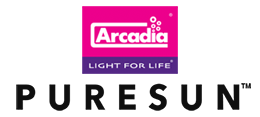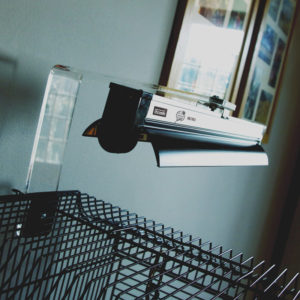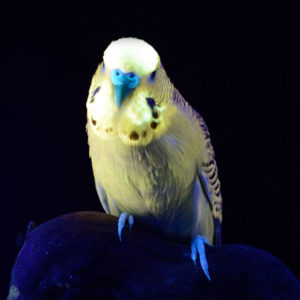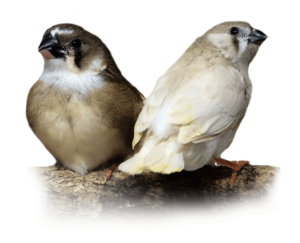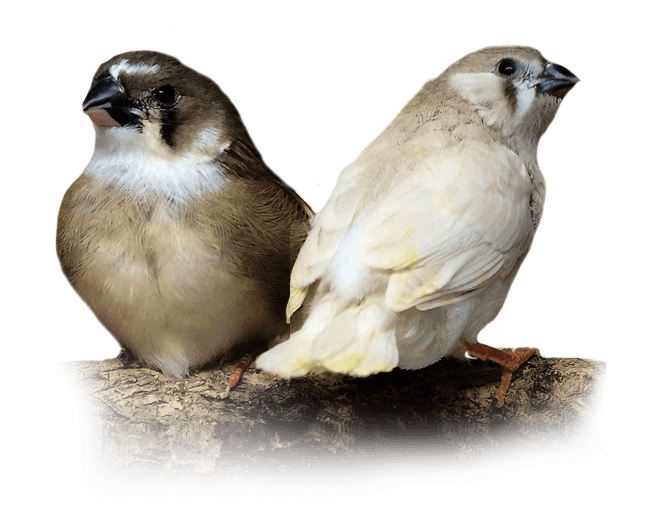Getting the most out of UV lighting
John Courtney-Smith, a parrot and reptile enthusiast, has developed a great interest in specialist UV-lighting and the science behind the systems, working and advising at Arcadia, the lighting professionals. In the first two parts of this series of articles John looked at the importance of UVA-light and how UVB-light can halt feather plucking and bad behaviour. In part III he explains how to get the most out of UV-lighting.
Using the right type of lamp
The Arcadia bird lamp has been specifically designed to allow captive birds to use both UVA and UVB in the way that nature intended. This lamp has been designed to emit visible light at a colour, we call ‘full spectrum+ UV.’ Standard full spectrum lamps should not be confused with full spectrum+ UV lamps. The term ‘full spectrum’ simply refers to the colour of the light the lamp produces.
A standard ‘full spectrum’ and even some of the SAD lamps, produce a colour of light that is very close to natural daylight. They have a very high CRI (colour rendition index), and in simple terms these lamps allow keepers to see their birds in the best possible way, within the limitations of human vision. But, these lamps do not emit UV-rays.
It is important that UVA and UVB are provided in the correct ratios. We advise that a lamp fitted correctly near the bird should emit 12 per cent UVA and 2.4 per cent UVB. I have seen some bird lamps that have a high UVA content which is useful, but only produce half of one per cent UVB, which is not enough for birds to utilise.
It is vital to fit lamps correctly as UV cannot travel far and the further the light is from the bird the weaker the exposure will be. A bird lamp fitted 1m (3ft) above an enclosure would be of very little use to a captive bird as the percentage of UVB available at perch level would be minimal. It is essential that all light sources are placed above the bird. A bright light source hitting the bird side on can cause eye irritation, which can lead to infection. Protect your birds by fitting the lamp above the perch. There are numerous ways of fitting these lamps, but one of the easiest and safest ways to provide lighting for a small parrot or parakeet is to use a compact fluorescent lamp.
Two types of UV-emitting lamps
Self-ballasted, energy efficient lamps simply screw into any E27 lamp fitting. The downside is that they are very difficult to reflect properly. I suggest that the compact style lamps are used over the top of the cage in either an anglepoise floor lamp or a pendant/reflector hanging down from the ceiling. These compacts can also be used in the Arcadia bird lamp holder and reflector, which can be attached to the cages of smaller birds, such as finches and non-chewing parakeets.
For larger species we have to be little more inventive. Arcadia makes the bird lamp in standard T8 fluorescent tubes.
These tubes emit good quality bird lighting over a very wide area. But the limitation of these lights is that all flouro lamps emit light 360 degrees from the source, and must be used with a correct wattage reflector. These highly polished surfaces capture all the light and then reflect it and the UV energy, down onto the bird. These lamps also require a simple external ballast/controller, but they are easy to fit and use.
Fitting a UV-lamp
As with captive reptiles, birds also require graduated light, and we recommend fitting your bird’s lighting over roughly a quarter to one third of the total living space of a wire or barred parrot cage. This becomes the ‘basking zone.’ The rest of the enclosure will then have a gradual gradient into shade. Birds know intuitively, just how much exposure to UV-rays they require at any given time and will move around the enclosure to regulate this exposure.
If the cage is 1m (3ft) wide I would use a lamp and reflector that is 50cm (18in) long. All you need to do is decide whether the front left or back right is the parrot’s preferred basking zone. Fit the lamp above the cage so that its leads are out of the way of powerful beaks, but close enough for the bird to utilise the light. Ideally the lamp should be fitted no further than 50cm (18in) from the top of the cage. You should also place a perch high in the basking zone so that the bird can sit directly underneath the lamp and as close as is safely possible.
Catering for aviaries and breeding cages
For flight cages and indoor aviaries the fitting guide changes slightly. If your flight is 2m (6ft) long and 2m (6ft) high you would ideally use a lamp the same length. This is because in a flight situation the birds are more likely to be on the move. It is for this reason that we suggest using a longer lamp to open up the usable area of emission. Again choose one side of the flight to be the ‘basking zone’ and the other to be shade, allowing the birds to self-regulate between light and shade. In my experience, birds tend to sit on the highest perch right under the lamp and bask for long periods.
If you keep small parrots, such as lovebirds or parrotlets in wooden boxtype breeding cages bird-lighting can still be offered. Use a 60cm (24in) lamp and reflector over a 120cm (4ft) twin, a two lamp system which serves to widen the usable area of illumination. Fit the lamp and reflector to the punch bar centrally, using standard cable ties. This will then provide light and shade to both sides of the cage, while using only one lamp. Remember to lower the perches and fit the lamp as far to the top of the cage front as you can. This will then reduce the risk of eye strain to the birds. Using a reflector, places the light into the cage and prevents unwanted bright light shining back into the room.
All lamps have inherent limitations, and the useable lifespan of UV-lamps is only a year. Although good quality light will still be emitted, the UV content of a lamp will decrease month by month. Being tetrachromatic birds are sensitive to the beats or flickering associated with magnetic controlled systems (30,000Hz) and it is advisable to use an electronic controller for this type of bird lighting as these controllers provide energy to the lamp that is flicker-free (30,000Hz).
UV-lighting boosts a parrot’s wellbeing
Whether you own a pet African Grey parrot or a budgie, or you have a whole room dedicated to breeding birds, avian lighting can be used very effectively and greatly benefit birds. But, you as the keeper will also benefit by being able to view your birds in a totally new way. You may notice fluorescent patches and colours that you have never seen before – the effects of the lamps are dramatic and varying.
Apart from the vital aspects of UVlighting discussed in parts I and II, birds preen more readily, moult with less issues, produce more viable chicks and live long happy lives with strong bones. Song birds sing more and parrots seem to scream less. It may all sound too good to be true! Certainly bird lighting is not a cure-all by far, but the right bird lighting system certainly helps to keep birds in peak condition and helps them reproduce more readily, but UVlighting is only one part of the arsenal we need, to perpetuate aviculture.
Other considerations too…
A well thought out and very varied diet including seeds, green foods, nuts and oils are all essential in enabling our captive birds to thrive. Good quality supplements should be offered according to the brands instructions and a calcium source should be available at all times. Nothing can truly replicate the sun, this would be impossible. Bird lighting helps parrots a lot, but a fluorescent lamp will never have the power that the sun provides in their country of origin. Allow your birds to bask in unfiltered sunlight in the summer as much as possible. A cage is a fairly safe environment but a watchful eye is always needed, whether it is local cats, raptors or thieves. But, I believe captive birds benefit hugely from natural exposure so if it is safe to do so please let your birds enjoy natural sunlight. Birds are amazing and deserve the very best care that we can possibly provide. I am certain of one thing, I will never cease to be amazed and mesmerized by these flying miracles!
